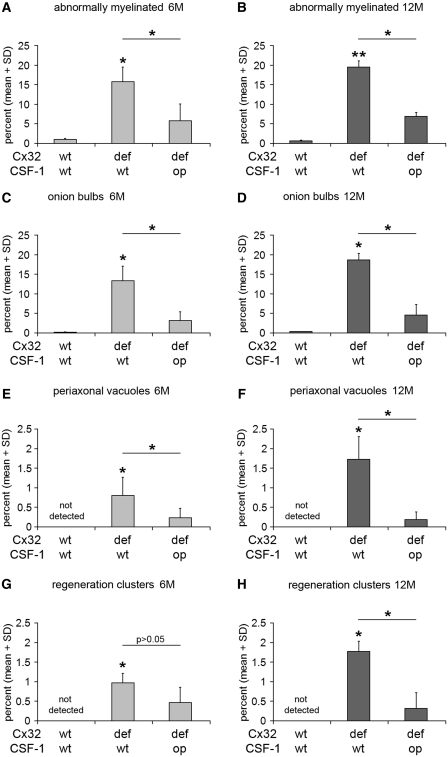Figure 5.
CSF-1 deficiency leads to persistent amelioration of the demyelinating and axonopathic phenotype in peripheral nerves of Cx32def mice. (A, C, E and G) Morphometric quantification of abnormally myelinated (thinly myelinated and demyelinated) axons, onion bulb profiles, periaxonal vacuoles and regeneration clusters by electron microscopy of femoral quadriceps nerves from 6-month-old (6M) (n = 4–5) and (B, D, F and H) 12-month-old (12M) (n = 3–4) wild-type, Cx32def/Csf1wt and Cx32def/Csf1op mice. Formation of alterations in myelin integrity (abnormally myelinated axons and onion bulbs) in Cx32def mice was significantly ameliorated in the absence of CSF-1 at 6 and 12 months of age. Formation of axonopathic alterations in Cx32def mice in form of periaxonal vacuoles was significantly ameliorated in the absence of CSF-1 at 6 and 12 months of age, while attenuation in the formation of regeneration clusters (axonal sprouting after damage) reached significance only at 12 months of age. Mann–Whitney U-test, *P < 0.05; **P < 0.01. Note that Cx32def/Csf1op mice show no or only minimal increase in the formation of neuropathic alterations between 6 and 12 months of age.

